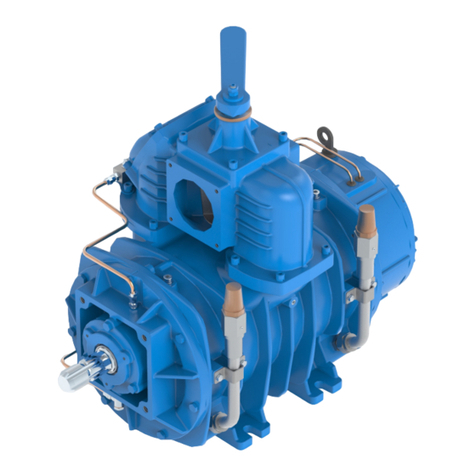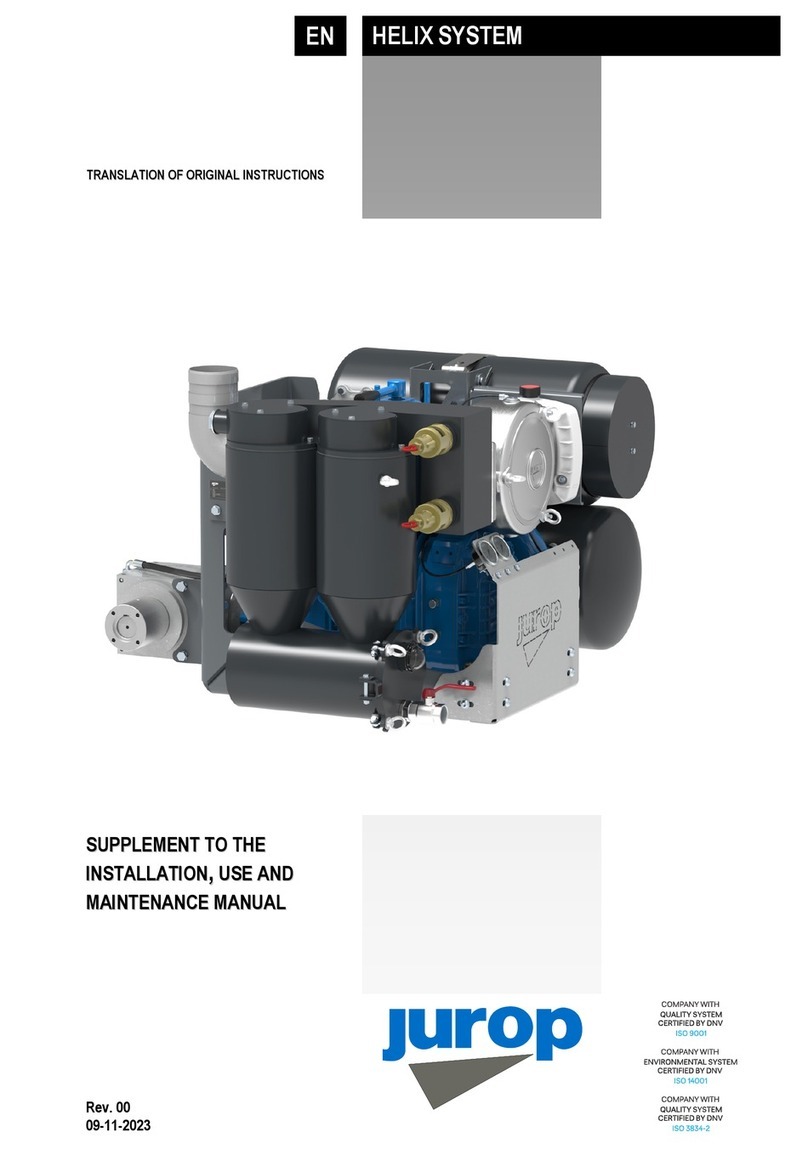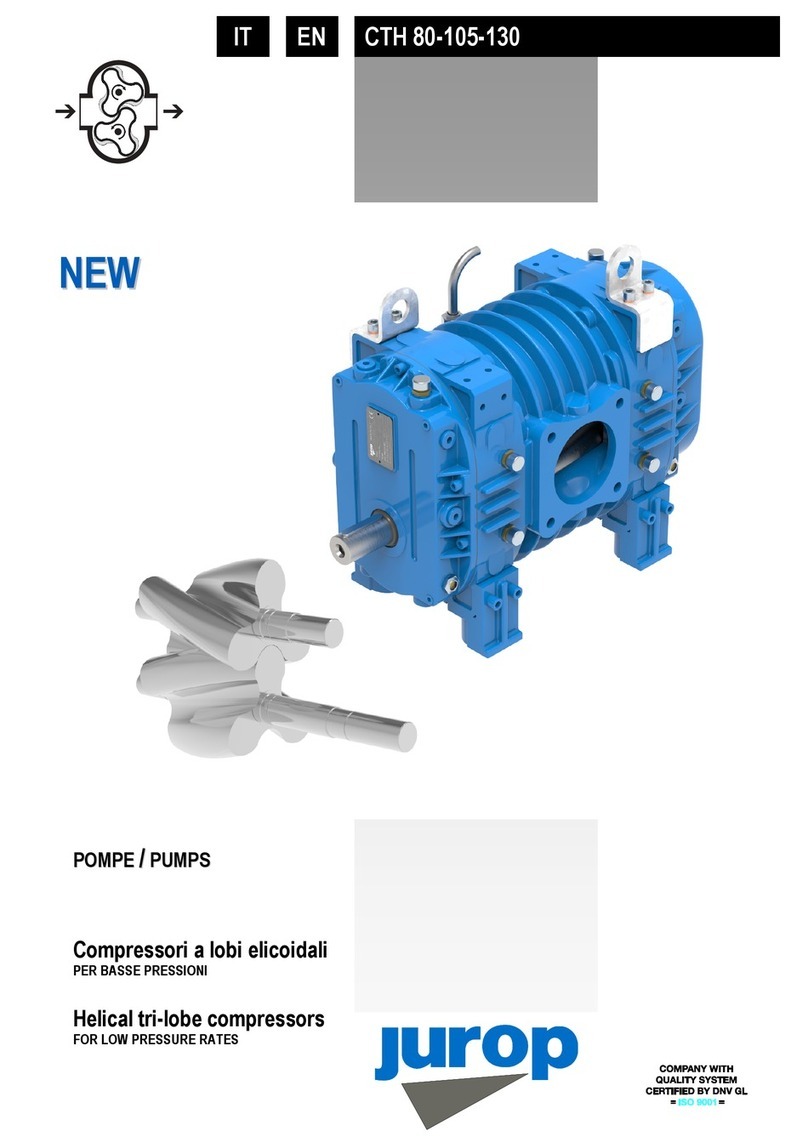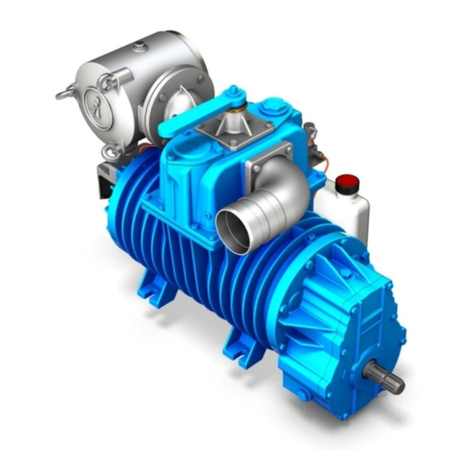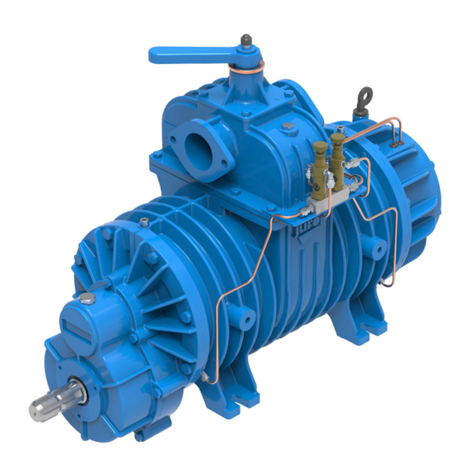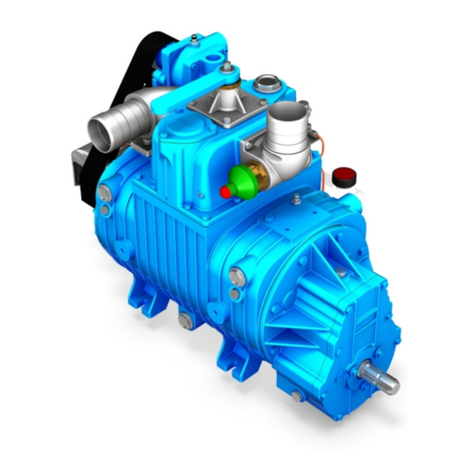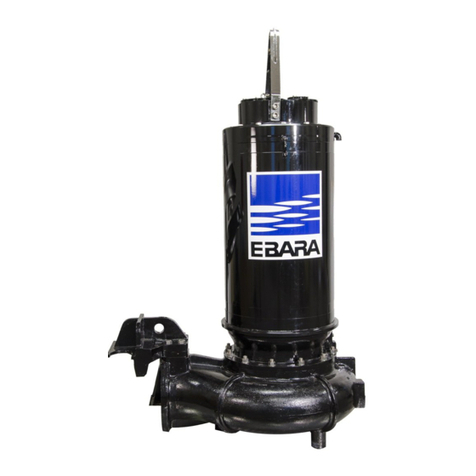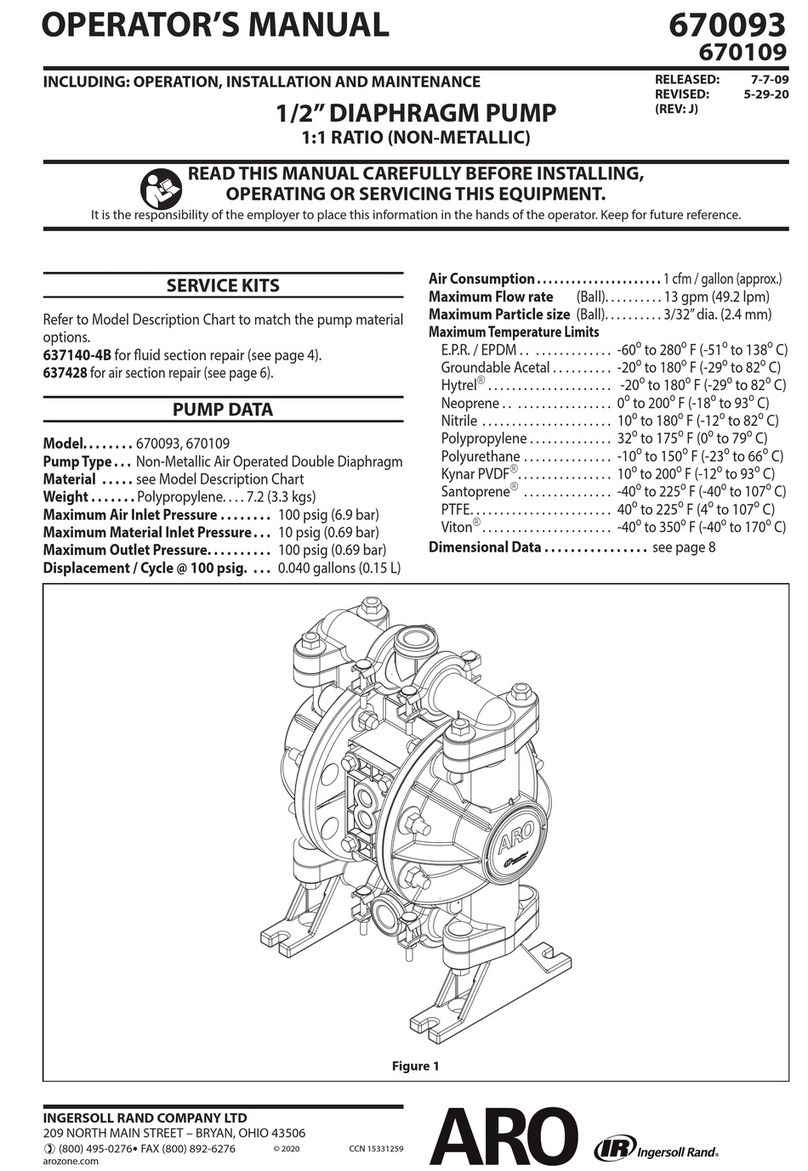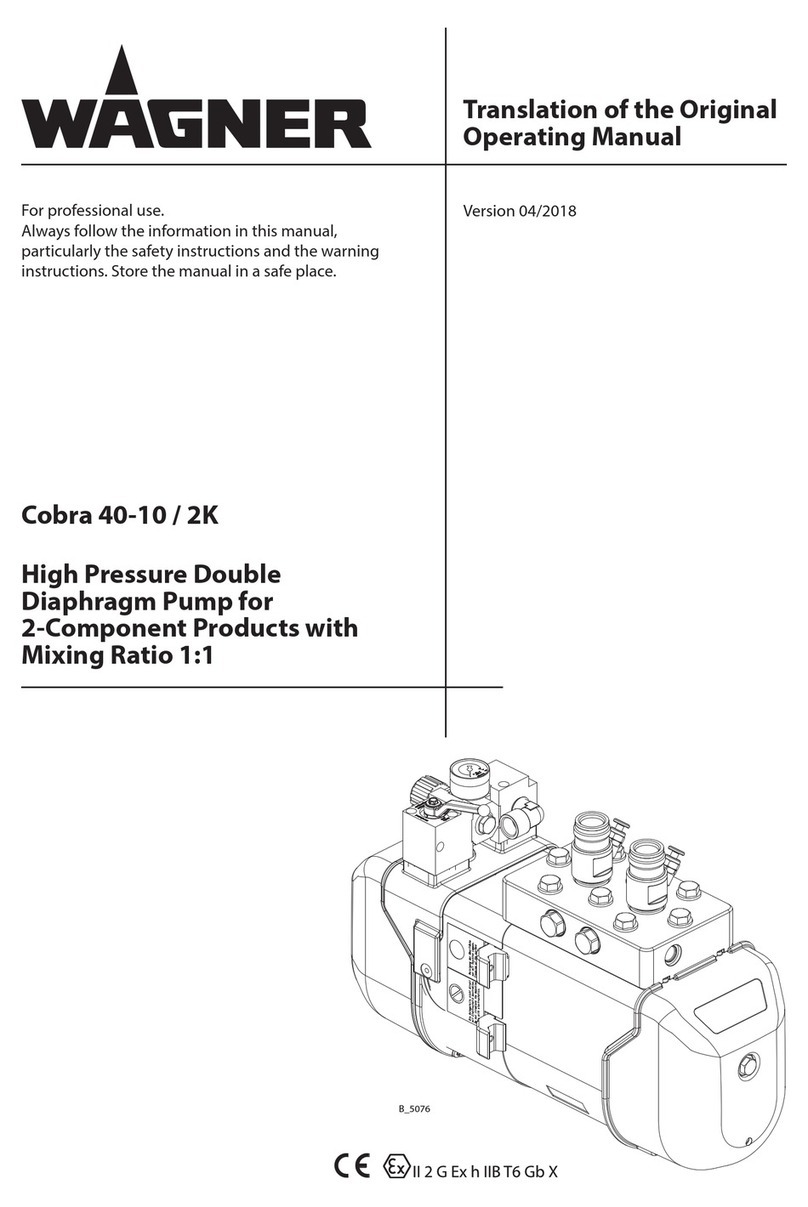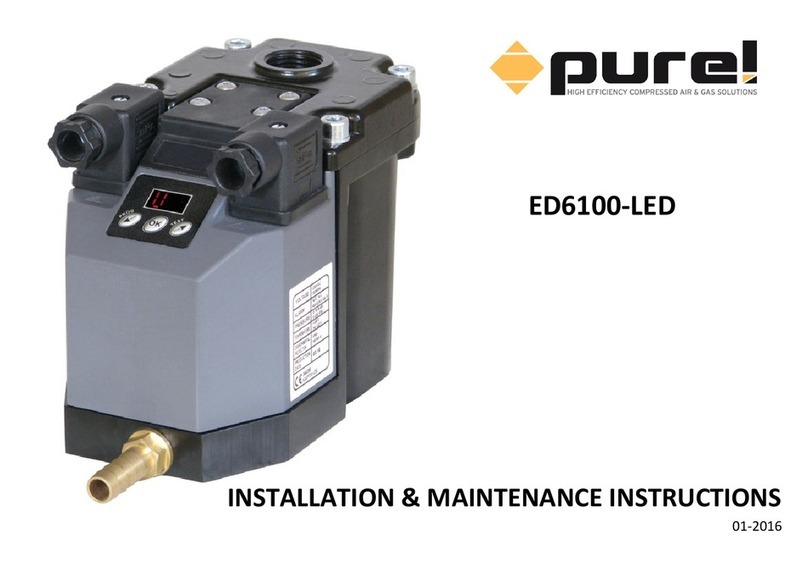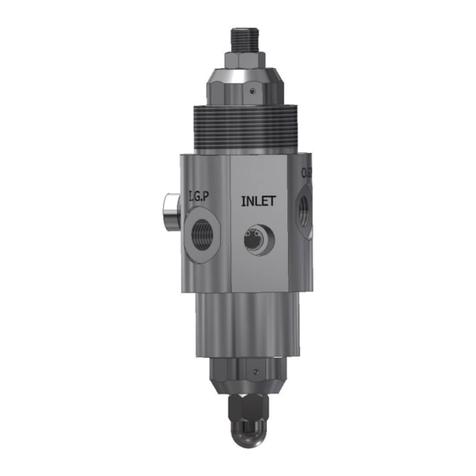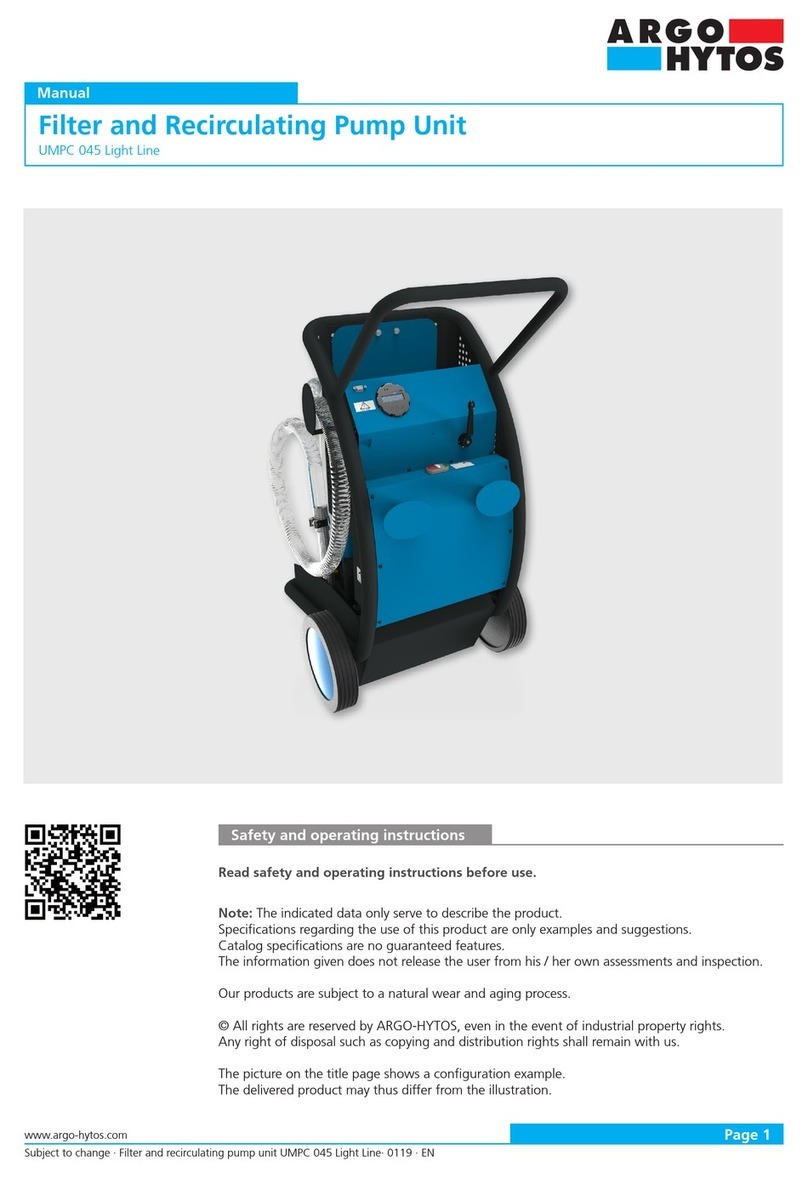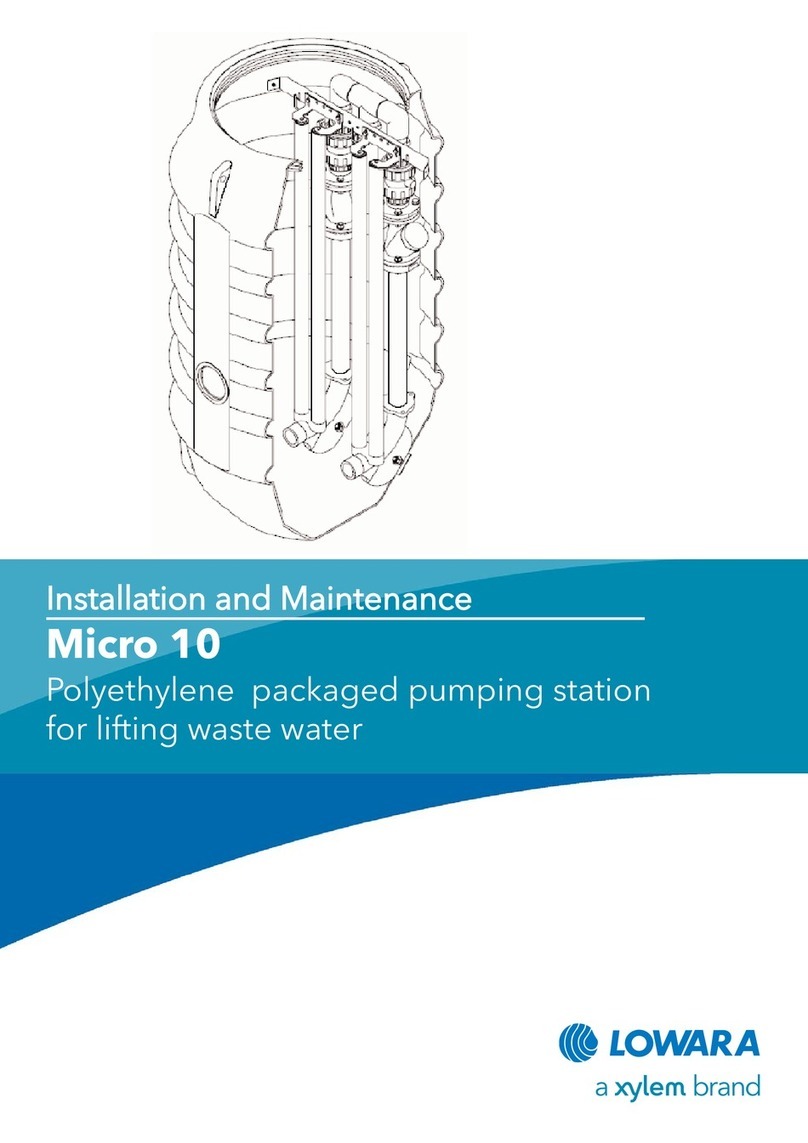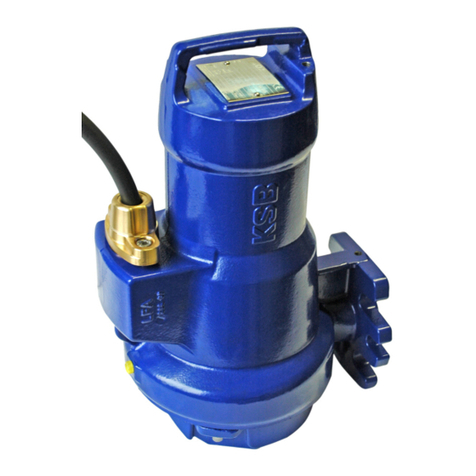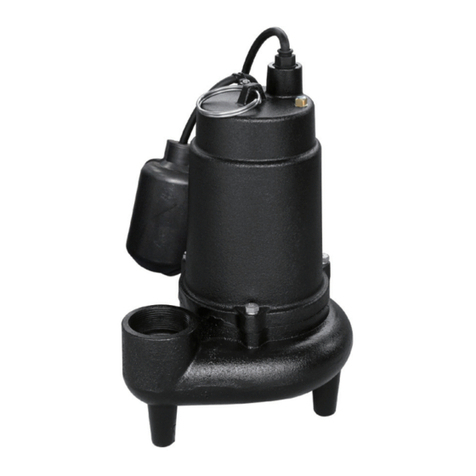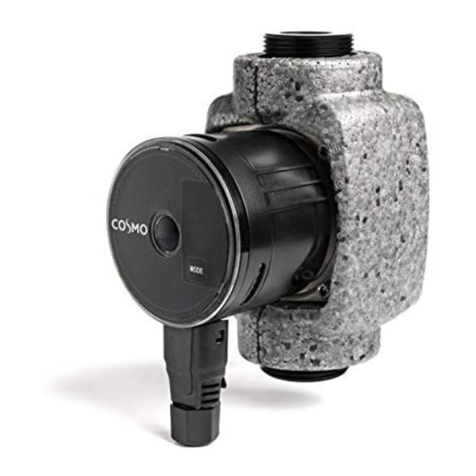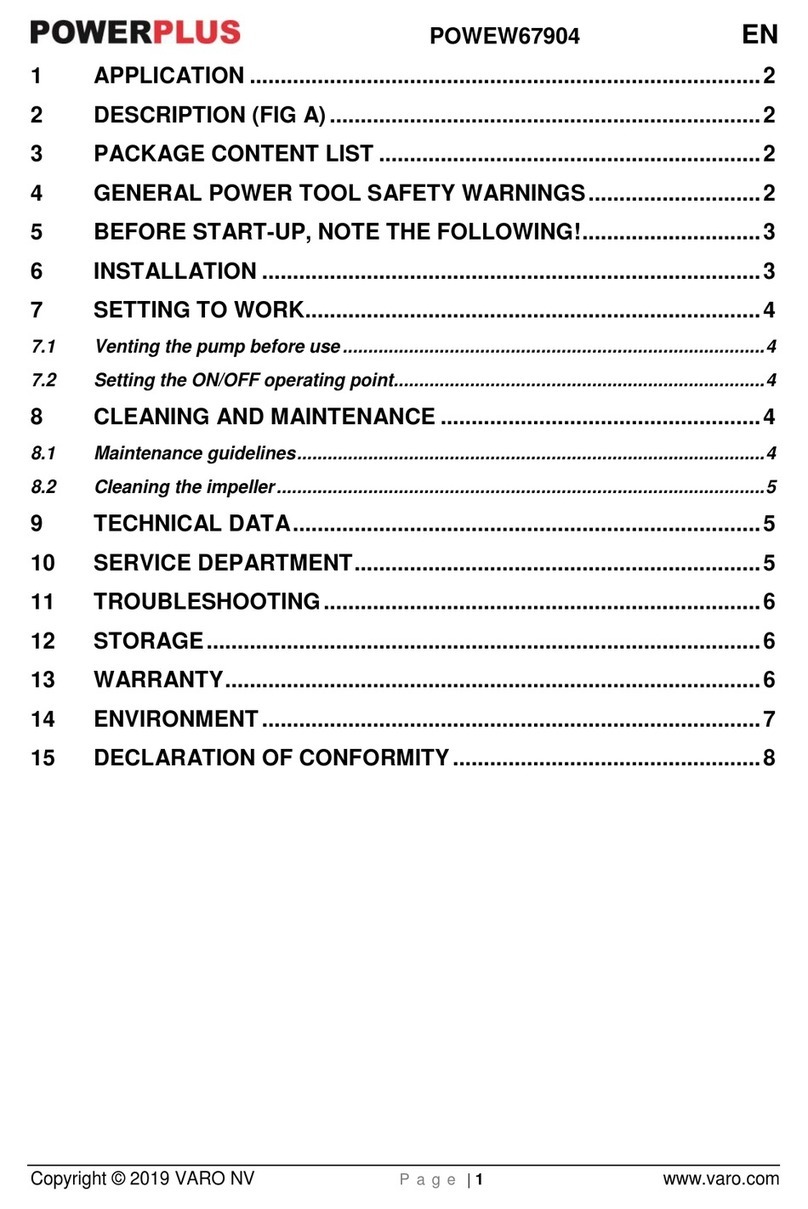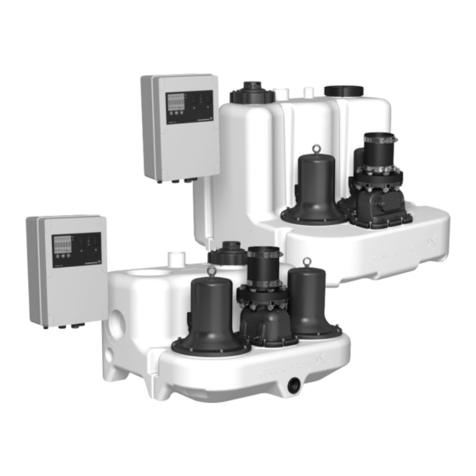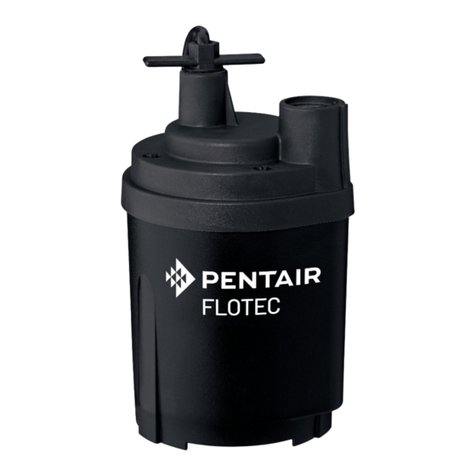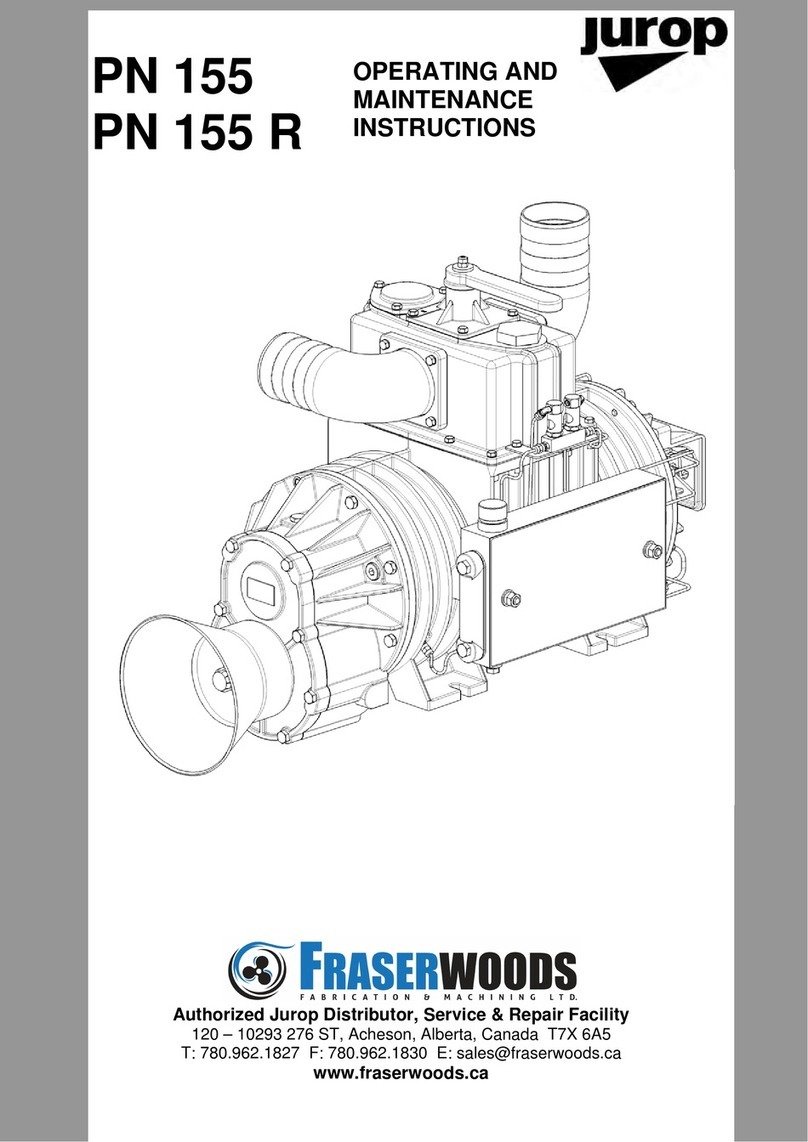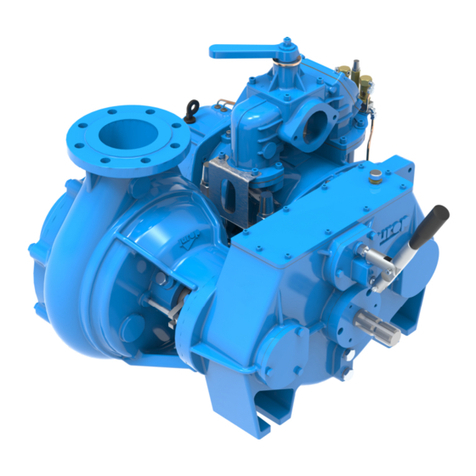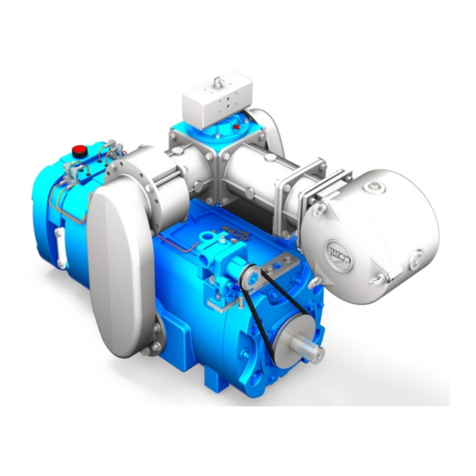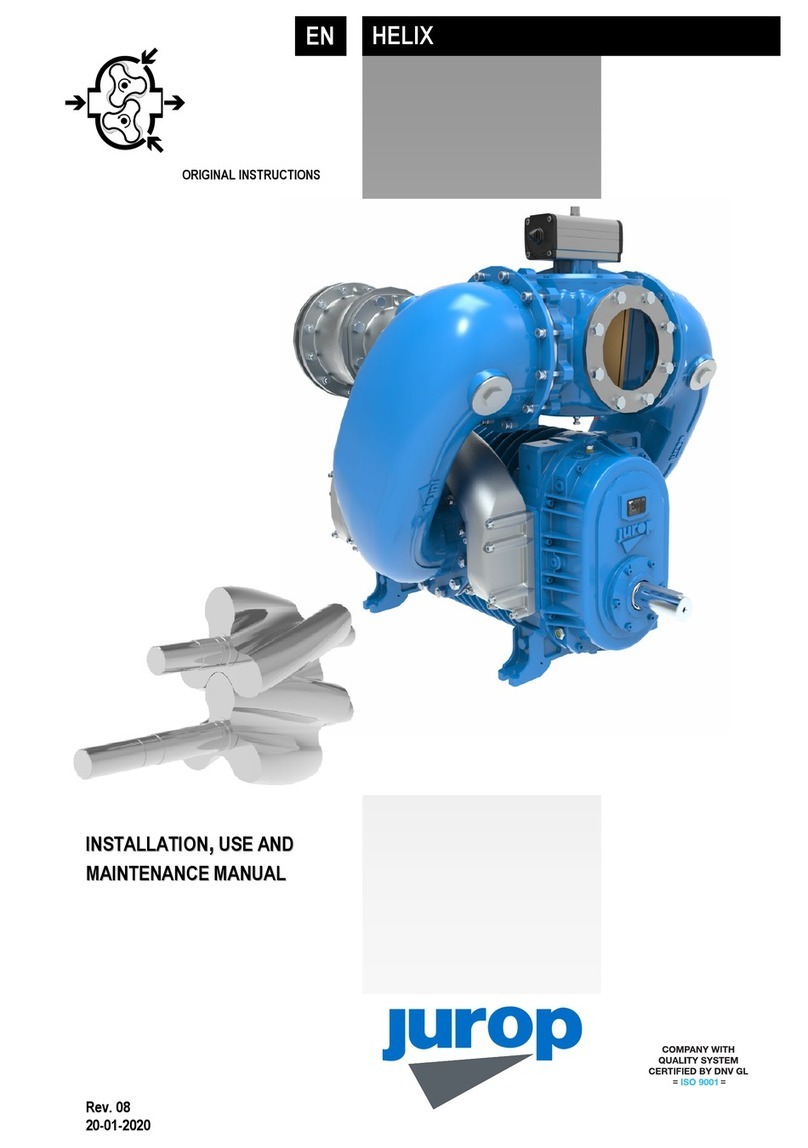• Fluid: mineral il f r hydraulic systems in c mpliance with ISO/DIN.
Temperature Optimum visc sity ale Max. visc sity all wed
-20 / +80 °C 12 – 100 cSt 750 cSt
• Filtrati n: class 19/16 c ntaminati n acc rding t ISO 4406 t be
btained with a ßx = 75 filter.
• Check circuit c nnecti ns: they must be applied in the same
r tati n directi n as that indicated by the arr w n the pump fr nt
c nvey r pr tecti n.
Pic. 4.10
• Draining: c nnect directly t the tank ab ve the maximum il
level. Operating with ut draining line may damage the m t r.
• Distribut r: pen-centre distribut r in central idle p siti n
(vacuum pump ff). It must be equipped with an adjustable
verpressure safety valve.
• M t r pipeline: utlet pipe must n t be f a smaller diameter than
that f the inlet p rt. Inlet pipes always have a diameter smaller than
utlet pipes. Ch se preferably flexible pipes t av id vibrati n
transmissi n.
• Tank: with sucti n pipe and return separated by baffles. If
necessary, use a heat exchanger t av id il heating ab ve 70-80°C
and pr tect it fr m extreme pressure with a pressure relief valve.
Minimum appr ximate capacity: as twice as the circulati n fl w.
Pic. 4.11
1 HDR pump 4 Oil filter
2 Distribut r 5 * Heat exchanger
3 HDR m t r 6 * Safety valve
* pti nal c mp nents
• Starting-up: be sure that the system is well cleaned and p ur il
int the tank and int the m t r h using (necessary t lubricate the
internal bearings).
• Vent the circuit and adjust the verpressure safety valve t the
l west p ssible value.
• Check the il tank level.
• Increase pressure and r tati n speed until perating values are
reached.
5.1. Starting-up f the pump
Lubricati n
• Check il levels in rear m unted tank.
• In rder t ch se the m st suitable il, see paragraph 2.7.
Vacuum line
• Open all valves f the vacuum-pressure system.
• Open all gate valves and rem ve any p ssible bstacle fr m the line.
5.2. Precauti ns when starting the system
• Check il levels in gearb x and side m unted tank.
• Check that all pr tecti n devices are c rrectly installed.
• Check that there are n bstacles in the vacuum line.
• Check r tati n directi n: pen all system valves and start running
sl wly.
D n t r tate in the wr ng directi n: this may
damage the vacuum pump. F ll w the arr w
indicated n the fr nt flange.
• Check which p siti n f the f ur-way integrated valve lever all ws
vacuum r pressure functi ning.
• If the pump has been in st rage f r a l ng time: inlet ½ liter f il in
the pump f r an easy cleaning f internal parts.
• Cl se the valve and increase vacuum rate ( r perating pressure).
• Check l ading and perating speed f r vibrati ns r unusual
n ises.
This vacuum pump is designed t w rk at
maximum speed, but f r l nger perating we
rec mmend the pump be run at w rking speed
(see par. 2.4).
• T reduce the vacuum rate t 80% max.
• Prepare adequately transmissi n.
5.3. Operating precauti ns
• Run the vacuum pump at a r m temperature f -20°C e +40°C.
• Running at c ntinu us duty: see paragraph 2.5.
• D n t make the vacuum pump verheat. Maximum air
temperature n exhaust ( r delivery) side: 180°C.
• If maximum temperature all wed is reached, in rder t prevent
damages t the internal parts, it is rec mmended:
- T reduce the vacuum rate r the w rking pressure by pening
the venting p rt;
- T reduce the pump speed acc rding t list at paragraph 2.6.




















